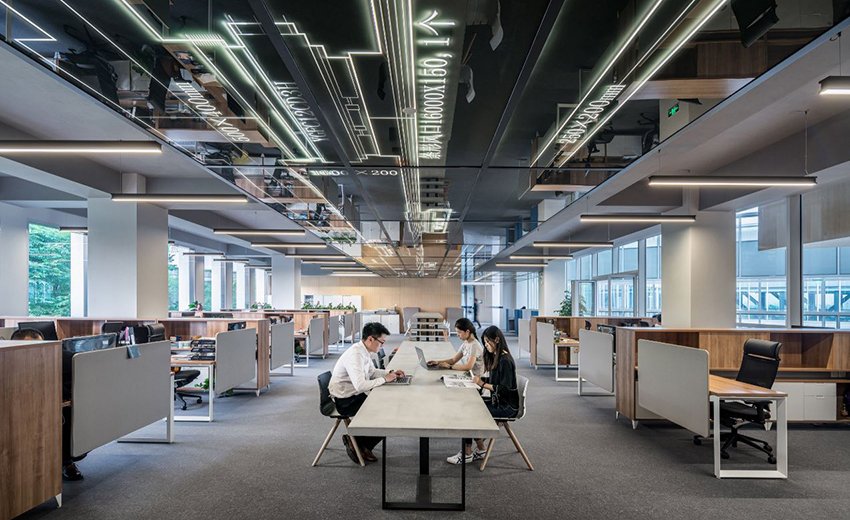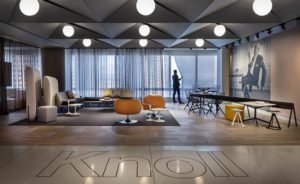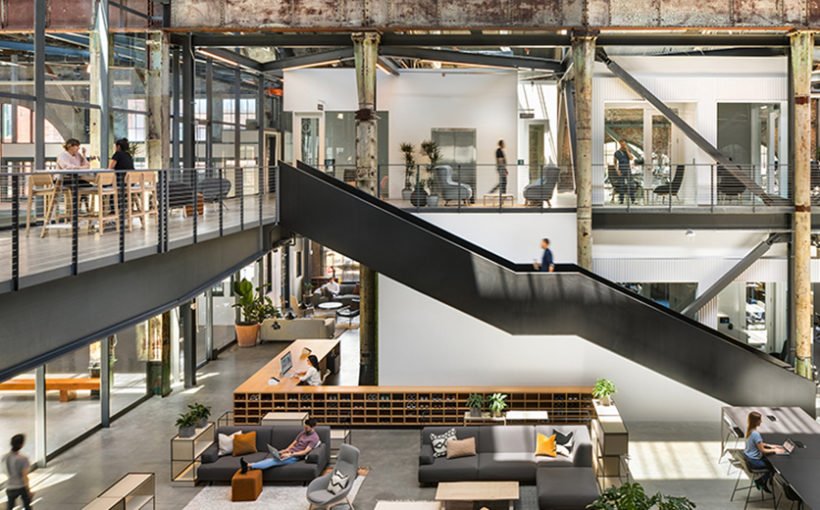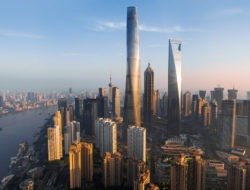For several months, initiatives have multiplied to adapt workplaces to new health standards. The opportunity is now to make the office even better than it was before the crisis. The idea is not just get back to where we were, but to move forward, be resilient and thrive.
As workplaces will be reinvented, science-based solutions will integrate emerging technologies to ensure employee safety and an even higher level of wellbeing.
2 examples
Here are two examples in which office technology and scientific research will bring new features that could make work life more efficient, productive and healthy.
In the new socially-distanced workplace, sensing hardware coupled with analytics are able to plan seating allocations based upon configurable social-distancing guidelines/regulations. This newly added feature to the pre-existing analytics tools shows the power of utilizing data and software.

A graphical representation of the Graph software, which redesigns and adapts office spaces. © Gensler.
One out of many ideas : The American company Gensler has developed Graph, a software that analyses the qualitative and quantitative human data of a company and spatialises them, that is, it translates this information into plans for professional spaces. This tool helps to make decisions when designing or transforming office spaces. In this case, Graph (re)designs offices that offer a maximum guarantee for the health, safety and comfort of its occupants.
This is one example on how software can help to remodel offices. For example, by creating separate entrances for customers and employees, different ventilation systems by zones, an isolation room (if someone isn’t feeling well) or specific furniture that can easily be moved to adapt to a new configuration.
Gensler set an example by using its software to remodel its own offices. For example, by creating separate entrances for customers and employees, different ventilation systems by zones, an isolation room (if someone isn’t feeling well) or specific furniture that can easily be moved to adapt to a new configuration.

© lycs-architecture
Health and safety
In San Francisco, epidemiological research has been applied to imagine the “office of the future”, a resilient space that takes into account the latest developments in technology and public health. It aims to protect the health of workers and stimulate economic recovery, while at the same time providing businesses with all the elements to make crucial decisions (when and how to reopen offices?) that promote workers’ health, safety, confidence and comfort in the office.

© Knoll
This “epidemiologically guided” office was designed by Workplace 2030, a non-profit organisation that has decided to condense the latest academic research and official occupational health guidelines. Based on the work and recommendations of a dozen experts in workplace technology, this interactive learning centre brings together all the latest developments aimed at preserving the health of workers and improving their comfort. Workplace 2030 can be visited by business leaders or HR managers who want to better visualise how to reorganise their workplaces. Virtual visits are also possible in case of health constraints prohibiting physical visits.
Here are some other examples of the innovations that have been implemented in this model office.
- An electronic device allowing a daily health check-up for everyone. This test is carried out in a room provided for this purpose.
- A hygienic airlock: it is not possible to access the facilities until you have disinfected your hands.
- The use of contactless applications (via smartphone) to control printers and other office devices.
- An automatic count of the number of people already present on the premises, as well as a mapping indicating the movements and temperature of each occupant.
- An office reservation system, in connection with a cleaning team that will disinfect the premises between two users.
- Plant walls that help purify the surrounding air.
- Access for all, via an app, to medical or psychological help.
Tags: Gensler, Graph, office of the future, Workplace 2030





































